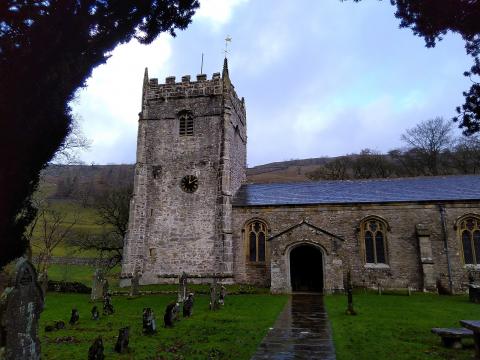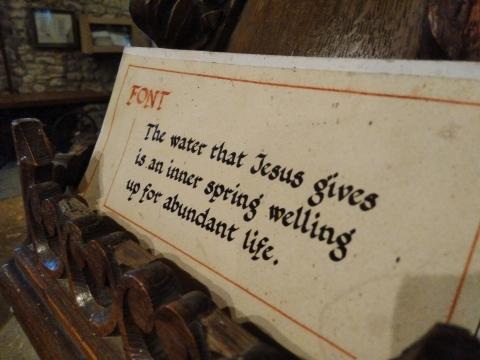Bells of Arncliffe

Arncliffe Church is one of the rather fabulous old churches nestling in the green dales of North Yorkshire. Though I cannot vouch for its evangelical fervour or faithfulness to God’s word, its members do at least attach little bits of paper to various furnishings (e.g. the font) to explain their spiritual significance. Deans of English cathedrals, take note.
Although much of the nave and chancel were rebuilt and meddled with in the nineteenth century, the fifteenth-century belltower seems to have been left unmolested. It continues to house a number of bells, one of which, remarkably, has been dated 1350 and still tones an F sharp. This makes it older than the tower which accommodates it, with an information sheet at its base suggesting it was brought from Fountains Abbey in 1450. Upon it, in beneventan script, is the Latin:
Petre poli clavis fac ut intremus prece qua vis
which the church (with a little imagination) translates:
Peter, to whom the key to open and to shut is given
Grant thou to us, that we, with thee, may enter heaven.
For 500 years, Dalesmen and women were called to worship in melodious F sharp, beautifully chiming over the babbling and burbling of the River Skirfare. Sadly, salvation never was in Peter’s gift; the key he held was Christ Himself. The bell, coming as it did from that Popish bastion of monkery and priestcraft, proclaims the apostles (and their Roman heirs) as being the dispensers of grace. Much as I love the old churches and their ancient features, they do not all tell truth. Those who would enter heaven must apply to Christ Himself and directly, not through St Peter, Pope Francis or Father Jack. That bell might sound sonorously, but it doesn’t ring true.

- Log in to post comments


 Sunday Worship 10.45am & 6.00pm
Sunday Worship 10.45am & 6.00pm